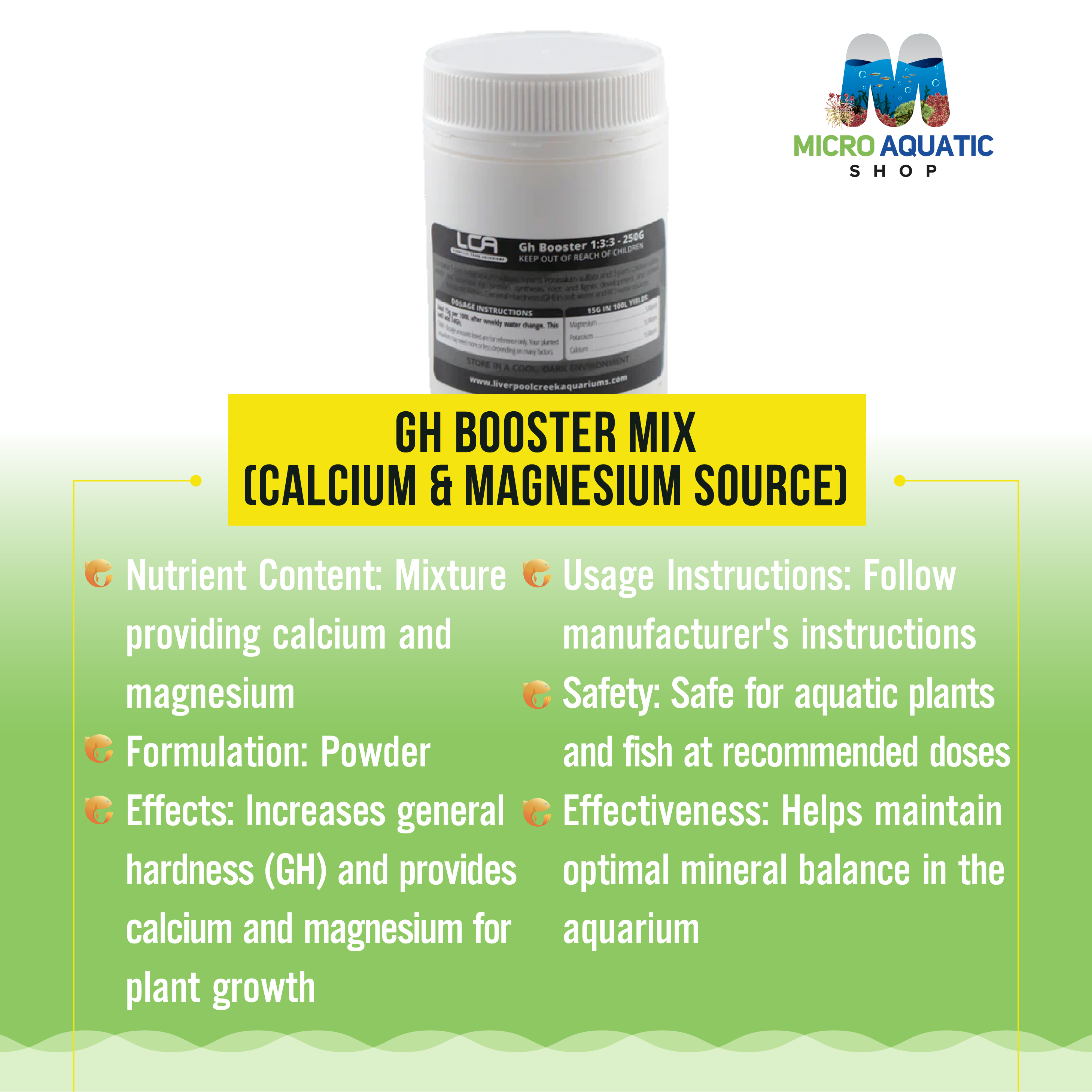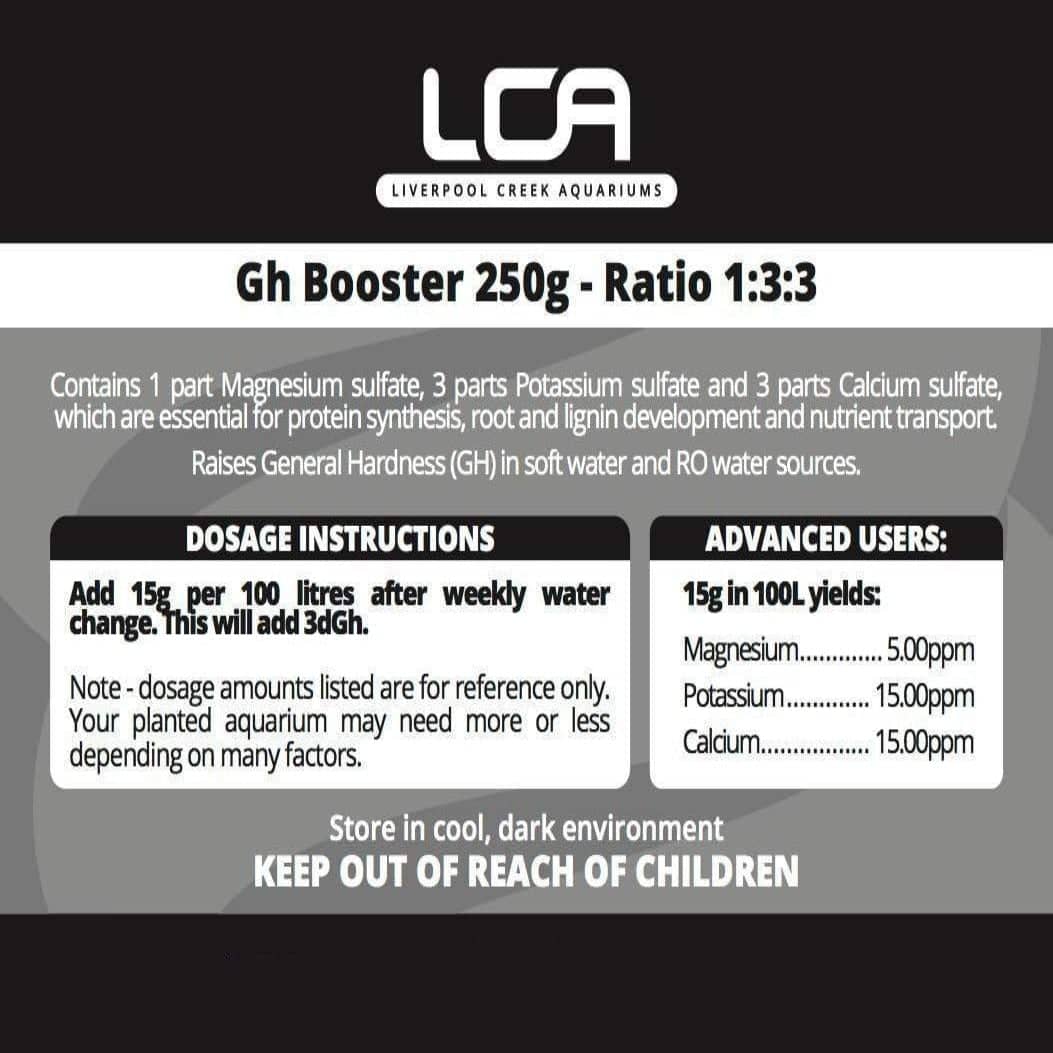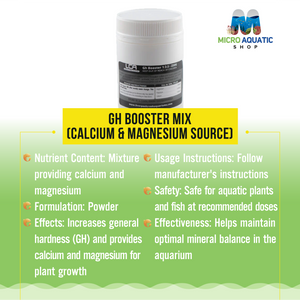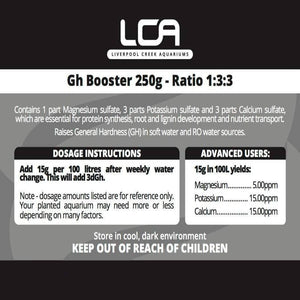Gh Booster Mix (Calcium & Magnesium Source)
Guarantee Safe Checkout
Gh Booster Mix (Calcium & Magnesium Source)
Description
Contains 3 parts Potassium Sulfate, 3 parts Calcium Sulfate, 1 part Magnesium Sulfate.
- Use to provide Calcium and Magnesium.
- Use to boost the general hardness (GH) of soft water or RO (reverse osmosis) water.
- 15 grams will raise the GH of 100L of water by approx. 3 dGH (General hardness) is the measure of Magnesium and Calcium in your tank. Both of these are required for plants and are sometimes a limiting factor in plant growth showing as a yellowing of young leaves.
Calcium for the planted tank!
Calcium is one of the six macronutrients that every aquatic plant need. Plants use macronutrients in a large amount regularly. As every plant uses them so much, macronutrients should be added to the aquarium on a regular basis.
Calcium is absorbed as Ca2+ ion by the aquatic plants. Calcium helps the function of many organisms of a plant. Calcium is a vital nutrient for the development of the cell membrane as well as the cell wall. It also stimulates the rate of cell division. Absorption as well as the conversion rate of nitrate and carbohydrate metabolism rate are also controlled by it.
The calcium that is stored in the plant tissue becomes non-transportable. So, terrestrial plants need a constant supply of calcium. But it is not that much of a problem for aquatic plants because, they can absorb Ca2+ ion from the water column using their leaves.
Why aquatic plants need Calcium?
=>It is a component of the cell wall and cell membrane.
=>It provides strength to the plant.
=>Helps the transportation of other nutrients within the plants.
Deficiency Symptom:
=>Yellowish margin appears on the young leaves.
=>Deformation of leaves may appear.
Calcium deficiency? Uptakes and requirements of Calcium by the aquarium plants are still unclear. But, it is sure that, calcium deficiency can only appear in soft water. The water that is supplied by the city contains sufficient amount of calcium. So, if you perform water changes regularly, there should be always a sufficient amount of calcium in your aquarium.
Role of Magnesium in Planted Tank!
Aquatic plants absorb Magnesium in the Mg2+ form. It is a member of the macronutrients for aquatic plants. Plants, especially aquatic plants need Magnesium often in larger amounts.
Why Aquatic plants need Magnesium?
Magnesium plays an important role in the photosynthesis of aquarium plants. The chlorophyll molecule has Magnesium in the center of it. Magnesium also takes part in various other functions such as the formation of DNA,RNA and Protein, activation of enzymes, phosphate transportation, fat, vitamin and carbohydrate formation, energy transmission and so on. Magnesium is transportable within the plants. The growing parts of the plants have a concentrated amount of Magnesium.
Magnesium deficiency symptoms:
=>The leaf tissue becomes pale, though the vein remains green.
=>Symptoms of magnesium deficiency first appear on older leaves.
There is absolutely ZERO Risk in buying from our trusted store as we use Encrypted SSL certificates for 100% Security so you don't have to worry about your security!

| Gh Booster |
250g, 500g |
|---|




